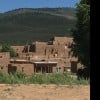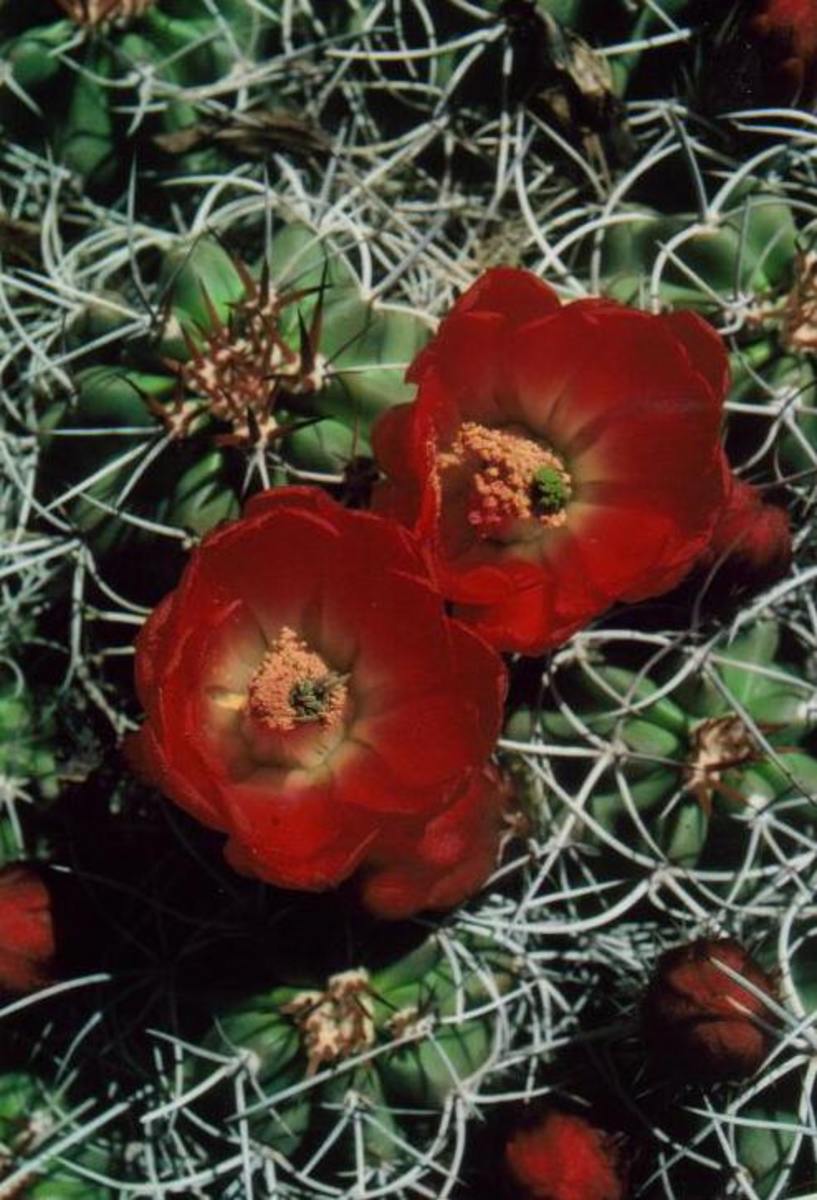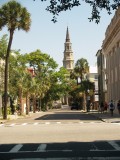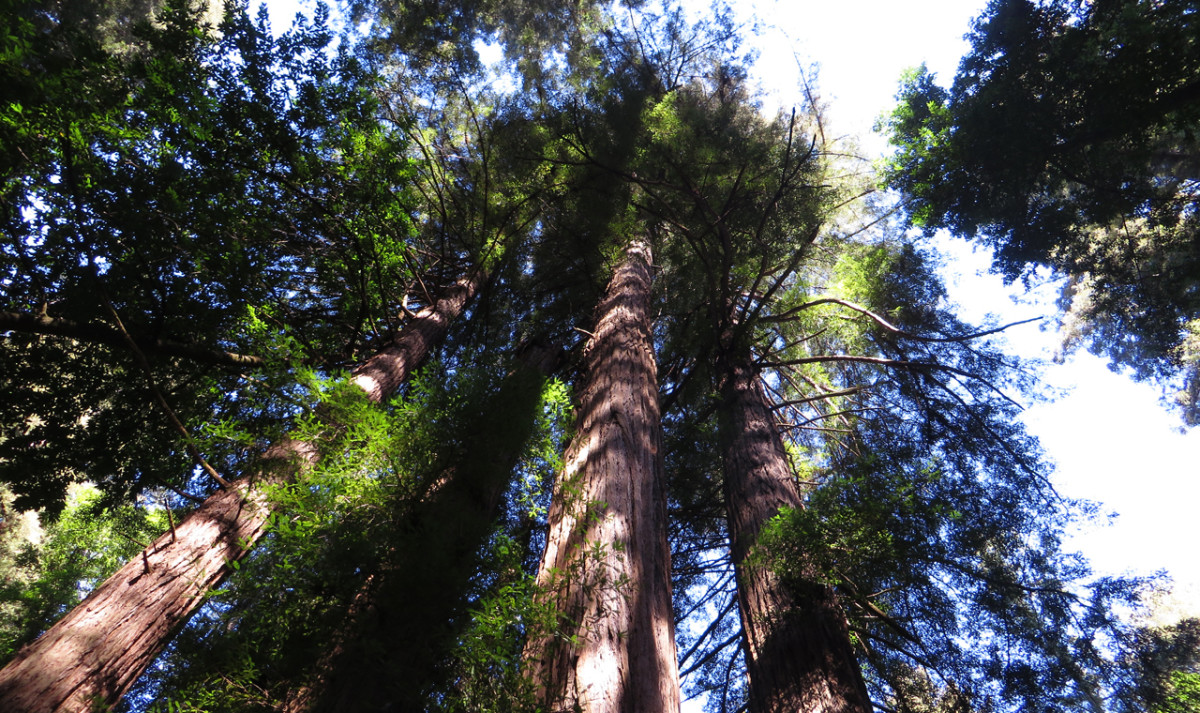- HubPages»
- Travel and Places»
- Visiting North America»
- United States
Taos Pueblo, New Mexico
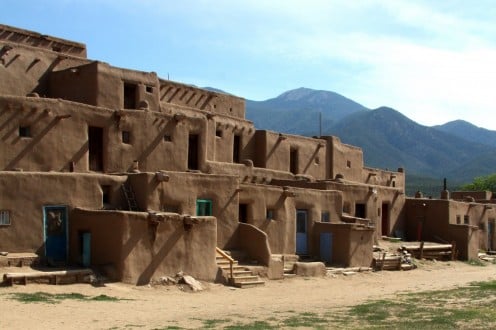
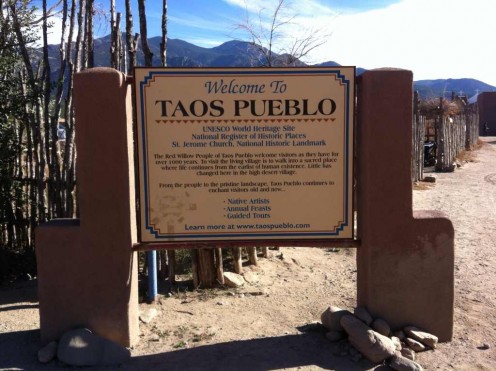
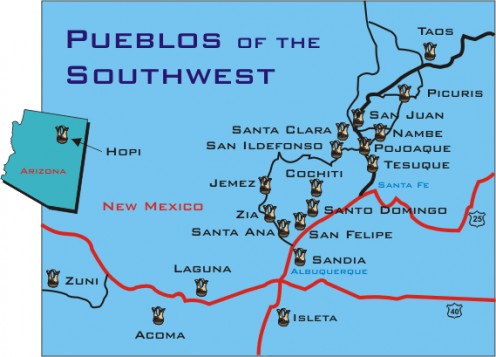
Back when I was in the third grade I wrote and gave a report on the Pueblo Indians as we called them back then. I had never been out west, but I had always wanted to visit a Indian reservation. As I gave my report to the class, I held up a book with a picture of a pueblo, similar to the one above, so my classmates could see what I was talking about.
Nearly fifty years later, I have moved out west to New Mexico and finally have visited an native American reservation known as Taos Pueblo. When I saw it for the first time, I was awed and stunned. The very Taos Pueblo I was standing on was the picture of the pueblo I had shown my third grade class. I realized at that moment I had come full circle. Who would have guessed.
This Taos Pueblo is the most photographed site among all of New Mexico's nineteen pueblos and the most photographed site in the state of New Mexico. It also attracts more visitors than any other pueblo.
It is a National Historic Landmark and was designated as a World Heritage Site by the United Nations in 1992.
Taos Pueblo is the northern most pueblo in New Mexico out of the nineteen pueblos located here. It is nestled in the Northern Rio Grande Valley next to a small tributary of the river. Because of its location close to a principal mountain pass it linked the Pueblo world to the Plains native Americans and therefore was influenced by the Plains natives culture as well.
It also is located at the base of the Sangre de Cristo (Blood of Christ) mountains and Taos Mountain in particular is very sacred to the pueblos. It is from here in the mountains, Blue Lake, where they get their natural spring water.
Taos Pueblo Ceremonies open to the Public
January 1: Morning and afternoon turtle dances
January 6: Afternoon deer or buffalo dance
May 3: Santa Cruz Feast Day Foot race (8 am) and afternoon corn dance
June 13: San Antonio Feast Day Afternoon corn dances
June 24: San Juan Feast Day Afternoon corn dances
July: Second weekend. Taos Pueblo Pow Wow (photography allowed)
September 29 - 30: San Geronimo Feast Days. Foot races, pole climbing
December 24: 4-7 pm Catholic vespers, bonfire procession of the Virgin Mary
December 25: deer or matachine dance
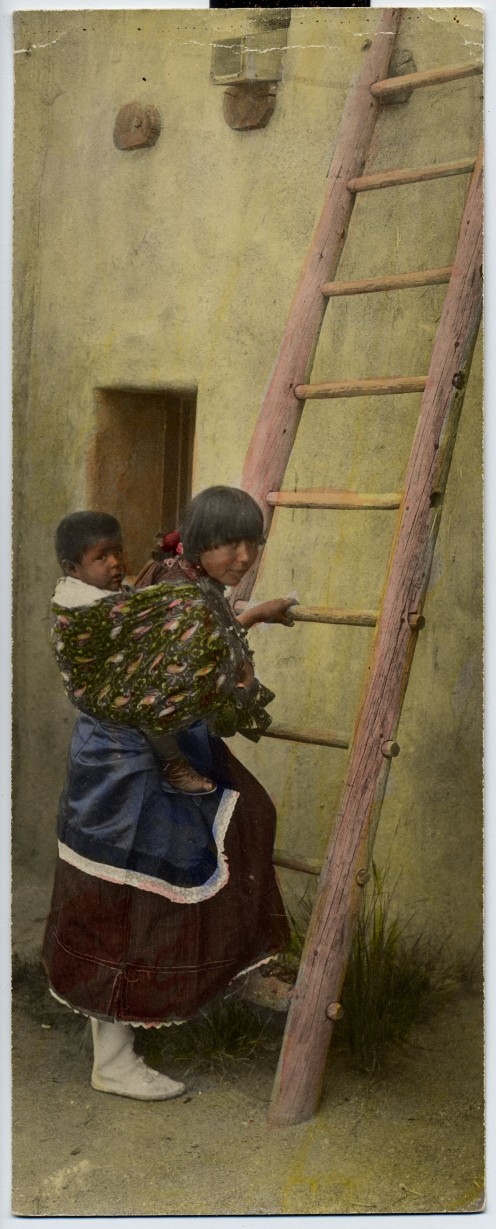
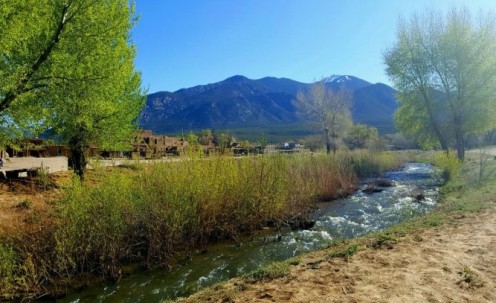
Pueblo traditions
Taos Pueblo is unique because it is the one pueblo that has retained its traditions and traditional way of living more than any other pueblo. It has no electricity or running water to this day to preserve the authenticity and essential character of the pueblo to the 17th century look and feel from when the Spanish arrived.
Red Willow River that runs through the pueblo originates high in Taos Mountain at their sacred Blue Lake. The river water is their only drinking water and also irrigates the fields and pastures throughout the pueblo's 105,000 acres of land.
On that land graze a buffalo and cattle herd that the pueblo owns. There are also about one hundred corn fields, the basic food of the puebloans.
The people of the Taos Pueblo are known as the Red Willow People named after the river that runs through it, and they are also known as the Tiwa people for their Tiwa language.
About fifty pueblo natives live full time at Taos Pueblo and most Taos Pueblo residents live outside the pueblo on Pueblo land or in the town of Taos. The pueblo has a total population of about twenty-five hundred.
Many puebloans maintain their family residences on Taos Pueblo and some open them on feast days and holidays. The pueblos remain in the pueblo families and are passed down from generation to generation. Non-natives are not permitted to own any of the pueblos.
There are two main structures on the pueblo. They are Hlaauma (North House) and Hlaukkwima (South House). The Red Willow River runs between the two structures.
The two structures look like apartment complexes and are believed to be more than one thousand years old making Taos Pueblo one of the oldest continually inhabited villages in North America. We don't know the exact date of when they were built because the puebloans do not divulge that information.
Archaeological digs and finds estimate it was built sometime between 1,000 CE and1350 CE. Back in that time, the residents lived in the upper and outer rooms and the inner rooms and chambers were used to store food and other materials. The residents entered the rooms through ceiling holes and ladders were required to reach the roofs and enter the adobe pueblo.
This was their defense from nomadic tribes such as Navajos, Apaches, and Comanches. The ladders were removed in times of attack, and the outside rooms did not have any windows as they do today as further defense against enemies.
The windows and doors on the outside walls of the pueblos today are a modern adaption for those that reside on the pueblo.
Taos Pueblo was once surrounded by a ten foot high wall with five watch towers. All that remains today are low sections of this wall that symbolically forms a small boundary between the old and new world and between natives and non-natives.

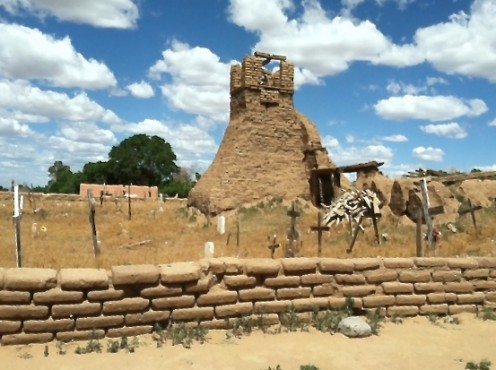
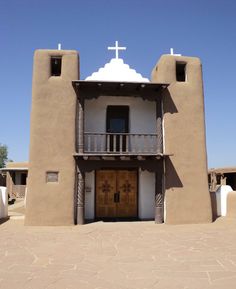
Pueblo history
Because of the pueblo's location in northern New Mexico and location close to a principal mountain pass the pueblo world was linked to the Plains American natives and they had more contact with the Plains natives cultures than the other pueblos, because the Plains natives came to northern New Mexico to trade.
The pueblo residents would trade their pottery, blankets, and foods in exchange for buffalo meat, hides and other goods. Taos Pueblo established a flourishing trade that grew to include the Spanish, then the Mexicans and finally the mountain men of the American occupation.
Trade routes linked Taos Pueblo to northern towns of New Spain and cities of Mexico via the Chihuahua Trail as well.
It has played a prominent role in many of New Mexico's most important historic events. The Pueblo has been a critical center of trade and communications between American native tribes and eventually between natives and Hispanics.
But, that was not always been so throughout history. The leader of the Pueblo Revolt of 1680. Po'Pay, originally from the Ohkay Owingeh Pueblo, (formerly known as San Juan Pueblo) hid out at Taos Pueblo while he was planning the uprising. Taos Pueblo warriors took part in the revolt as did pueblo warriors, a total of about eight thousand, from the other eighteen pueblos in northern New Mexico.
The puebloans ran the Spanish out of New Mexico for approximately sixteen years, but the Spanish entered New Mexico to reconquer the puebloans from 1692-96 and this time it was done more peacefully. The puebloans decided that adapting to Spanish rule was to their best interests and survival and so they adopted some of the Spanish culture and religion.
San Geronimo Church was built on Taos Pueblo in the 17th century as the puebloans adopted the Catholic religion and blended it with their own native rituals and religious practices.
And so they lived in relative peace with the Spanish for about the next two hundred years. Taos Pueblo became the major hub of a trade market that grew to include the Spanish, then the Mexicans and finally the Americans.
But another Pueblo revolt took place in 1847, during the American occupation of New Mexico. Hispanic residents and those from Taos Pueblo joined in revolt against the Americans and attacked the home of Governor Charles Bent in Taos. They killed and beheaded him. The U.S. Army counterattacked by torching the original San Geronimo Church which only held children and women. This ended the revolt. All that remains today of the original church are the ruins and the original cemetery.
What is amazing is that it survived with its culture intact for hundreds of years while borrowing from the Spanish, Mexican and American cultures over centuries of contact. Puebloans have intermarried with the Spanish, Mexicans and Americans as well as other natives. Each culture has enriched theirs but has also made them more insistent on retaining their own native culture.
Blue Lake
During the 20th century, the residents of Taos Pueblo waged a different kind of war. In 1906, their sacred Blue Lake (Ba Whuyea) was officially claimed by the federal government by Presidential order to become part of the Carson National Park in New Mexico. It was now part of the Forest Service.
Non-natives were able to graze cattle and camp on its shores, but the Taos puebloans were not able to hold their important religious ceremonies there. It took many decades but the puebloans finally prevailed.
In 1970, President Richard Nixon signed legislation to return Blue Lake and the surrounding area, 48,000, acres, to the Taos pueblo people. It is now part of their sovereign nation and reservation. Today, non-natives are not permitted near the lake.
They won back Blue Lake because of the government's denial of their First Amendment freedom of religious rights.
Today the Taos puebloans continue to adhere to their traditional tribal beliefs and practices but also honor their Spanish/Catholic past.
"Our tradition and religion require people to adapt their lives and activities to our natural surroundings so that men and nature mutually support the life common to both. The idea that man must subdue nature and bend its processes to his purposes is repugnante to our people."
~ Paul Bernal, Taos Pueblo War Chief. Testimony before Congress 1969
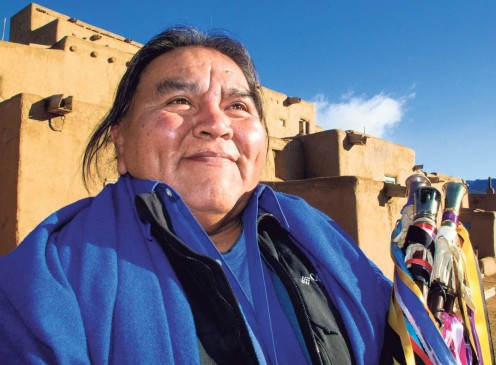
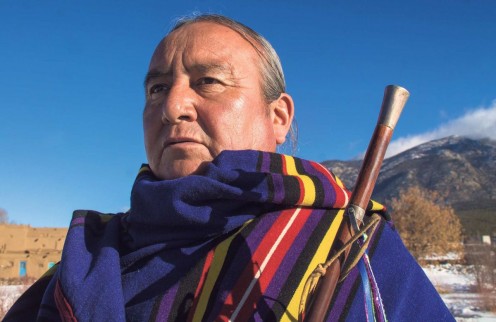
Today's pueblo
The Taos Pueblo is owned today by the Taos Tribal Council. It is headed by a Governor, War Chief, and a council staff. They deal with civil and business issues within the village and relations with the non-native world as well as protection of tribal lands, resources, and wildlife outside the Pueblo walls.
Because they are recognized by the federal government as a sovereign nation, they have their own native sheriff department and court system. Natives that break the Taos Pueblo law go through their own judicial system.
The 2016 Taos Pueblo Governor is Benito M. Sandoval and the 2016 War Chief is Richard Archuleta. I have seen these two out and about the town of Taos from time to time.
All natives who live on tribal lands are expected to provide their services for community duties when needed. Their oral traditions, history, and native language is still unwritten and unrecorded. Their history, rituals, and traditions are considered sacred and off-limits to non-natives except for the feast days and holidays they share with the public.
The tribe continues to use the Pueblo for sacred ceremonies. In addition to the pueblo buildings there is the kiva which is a religious and ceremonial space. The kiva is a round pit where the tribe holds religious ceremonies, rituals and important meetings. Non-natives are not permitted in the kiva or to observe their ceremonies. They keep their native religious ceremonies private and away from the public. What happens in the kiva, stays in the kiva.
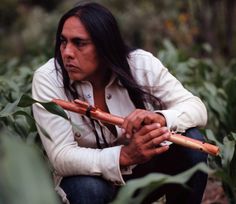
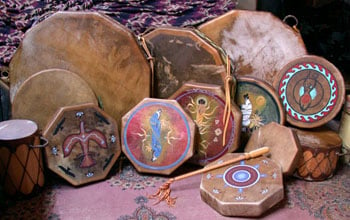
What to see at Taos Pueblo
Of course, the best things to see on the Pueblo are the native holidays, feast days, ceremonies and celebrations. They are listed above in the blue box. No photography is permitted unless indicated.
Probably the most popular and most attended is the Pow Wow they put on every July. Natives from Utah, Colorado, Nevada, Arizona, Wyoming, the Plains states, North and South Dakota and throughout New Mexico take part in the Pow Wow. Even native Americans from Canada join in this celebration. It is full of traditional dances, food, and native goods for sale during the second weekend in July.
(The short video below is of the 2016 Taos Pueblo Pow Wow which I attended. It is a gathering of native Americans from all over the U.S. and Canada. I attended on Saturday not Friday night. Cameras and videos are permitted at the Pow Wow.)
To be seen on the pueblo besides the two pueblo houses are some shops and artist galleries. For example, there is Ken Romero, artist, who has a gallery at Taos Pueblo.
momaLynn, a native of Taos Pueblo is well known for her leather goods, especially her hand made leather drums.
Robert Mirabal is a Taos Pueblo musician whose music can be heard on the Pueblo and on the weekends at El Monte Sagrado, an inn in the town. Not only do you hear the beauty of his flute playing and his singing, he includes Taos Pueblo culture and spiritualism in his performance. He plays about six or seven different flutes during the show and they are flutes that he has made himself on the Pueblo. He also sings and plays the leather drums that are made on the Pueblo as well. He has also won two Grammys for his singing and his albums.
( In the video at the end, you will hear Robert Mirabal play the flute and sing the song "Ee You Oo". It is a song to the children and he sings it in the Tiwa language which is the native tongue spoken on Taos Pueblo. It is a beautiful song with the lilting flute and the Tiwa words. He performed this song at the show I attended ,and he included a teenage girl and a small child who performed it with him. Needless to say, they were adorable. He is a bit older now than when this video was made.)
The Rocky Mountain Casino (every reservation has a casino) is located on the main road into the historic village and is open Sunday - Wednesday 8am - 1pm. and Thursday - Saturday 8am to 2pm.
The earnings from the casino go toward repairing the pueblo buildings, for native social programs, for the justice system, and for education,
The Pueblo has a Head Start School and a native K-8 school which they are very proud of, because they teach their native culture to the children starting in pre-school. After eighth grade, native students attend Taos High School in the town of Taos.
The Pueblo also offers native food on the Pueblo itself and nearby on Pueblo land is the Tiwa Kitchen, a pueblo style restaurant that offers, Pueblo stew, buffalo burgers, stuffed fry bread, grilled buffalo and onions over wild rice and fresh trout.
The Tiwa Kitchen also offers New Mexican Fare of green chile stew, enchiladas, and burritos.
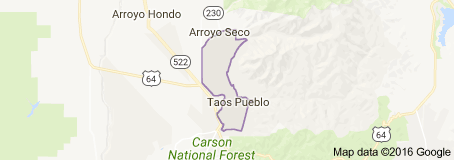
Directions to Taos Pueblo
Taos Pueblo is located eighty-five miles north of Santa Fe
It rests on the northern edge of the town of Taos. Head north on Paseo del Pueblo Norte just past the plaza. (it is the main north/south road through town.
Just past the Kachina Lodge, bear right at the Y in the road and proceed two miles north to the parking area outside the village.
The Pueblo is located about five hours by car south of Denver, CO. Coming down Rt. 522, follow the sign and take the road to the left before the Sheepskin Outlander store.
Cost is $16 per person. Sometimes there is an additional camera or photography fee.
Feast days and holidays are free.
